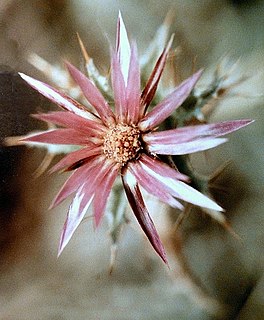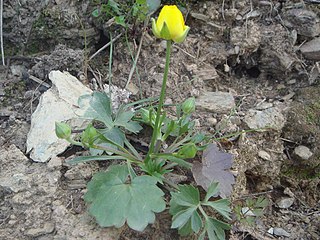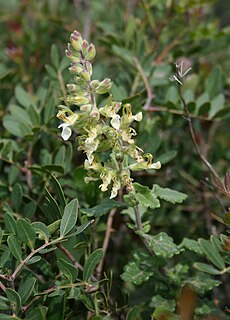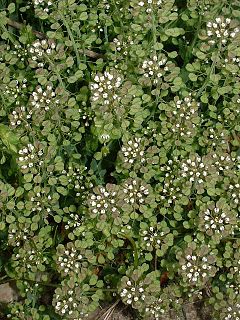
Elachista utonella is a moth of the family Elachistidae found in Asia and Europe.

Carex hispida is a species of perennial herb in the family Cyperaceae (sedges). They have a self-supporting growth form and have simple, broad leaves.

Carlina lanata is a species of plants in the family Asteraceae.
Carthamus caeruleus is a species of plants in the family Asteraceae.
Crepis pusilla is a species of plants in the family Asteraceae.
Eleocharis ovata, the ovate spikerush, is a species of annual grass in the family Cyperaceae (sedges). They have a self-supporting growth form and have simple, broad leaves and green flowers. Individuals can grow to 1.5 feet.
Euphorbia terracina, the Geraldton carnation weed, is a species of perennial herb in the family Euphorbiaceae. It has a self-supporting growth form and simple, broad leaves. Flowers are visited by Lipotriches brachysoma, Lipotriches natalensis, Lipotriches crassula, and Nomia bouyssoui.
Hypericum australe is a species of plant in the family Hypericaceae. Individuals can grow to 24 cm tall.

Orobanche caryophyllacea is a plant species in the family Orobanchaceae.
Orobanche cernua, commonly known as nodding broomrape, is a species of herb in the family Orobanchaceae. They have a self-supporting growth form and simple, broad leaves. Individuals can grow to 0.22 m.

Orobanche pubescens is a species of annual herb in the family Orobanchaceae. They have a self-supporting growth form. Individuals can grow to 0.17 m.
Persicaria lanigera is a species of plants in the family Polygonaceae.

Polypogon viridis, the beardless rabbitsfoot grass, is a species of perennial grass in the family Poaceae. They have a self-supporting growth form and simple, broad leaves. Individuals can grow to 0.43 m.

Ranunculus paludosus is a species of perennial herb in the family Ranunculaceae. They have a self-supporting growth form and simple, broad leaves. Individuals can grow to 0.23 m.

Romulea ramiflora is a species of plant in the family Iridaceae.
Rumex cristatus, the Greek dock, is a species of perennial herb in the family Polygonaceae.

Teucrium flavum is a species of shrub in the family Lamiaceae. They have a self-supporting growth form and simple, broad leaves. Individuals can grow to 0.39 m.

Thlaspi perfoliatum is a species of plants in the family Brassicaceae.

Trifolium scabrum, the rough clover, is a species of annual herb in the family Fabaceae. They have a self-supporting growth form and compound, broad leaves. Individuals can grow to 0.12 m.

Trifolium suffocatum, the suffocated clover, is a species of annual herb in the family Fabaceae. They have a self-supporting growth form and compound, broad leaves. Individuals can grow to 4.2 cm.












